When you turn on the tap, you expect clean, safe water to flow. But do you ever wonder about the unseen elements that might be present in your drinking water? One critical measure of water quality that often goes unnoticed is TDS—total dissolved solids. Understanding TDS and its impact on water quality is essential for anyone concerned about their health and the safety of their drinking water.
Total dissolved solids encompass a wide range of inorganic and organic substances, either molecular, ionized, or micro-granular in nature. These can include minerals like calcium and magnesium, making up the water’s hardness, or potentially harmful substances from industrial or urban run-off. A grasp on water quality indicators, such as TDS, is indispensable for savvy consumers aiming to ensure their water supply is as pure and palatable as possible.
Whether you’re filling a glass to drink, preparing meals, or watering your garden, knowing the role of TDS can help you make informed decisions about water treatment and consumption. So join us as we delve into the fascinating world of water quality and shed light on why TDS should be a household term.
Key Takeaways
- Grasp the essence of TDS to stay informed about the quality of your drinking water.
- Discover how total dissolved solids affect not just the purity but also the taste and hardness of your water.
- Identify potential sources of TDS in water, from natural landscapes to human-made pollutants.
- Recognize that while TDS levels are significant, they are not the sole indicator of water safety.
- Consider how knowledge of TDS and other water quality indicators can guide you in choosing the right water treatment options.
- Empower yourself with information to ensure your water supply meets your standards for consumption and use.
Exploring the Meaning of Total Dissolved Solids (TDS) in Water
When you fill your glass with water, you might think it’s just H2O. But do you ever wonder what else could be in that clear liquid? That’s where Total Dissolved Solids, or TDS, comes in as a crucial measure of water purity. But don’t let the term intimidate you. Let’s dive into what TDS really means, the TDS components it encompasses, and how TDS measurement can tell us about the quality of water.
Defining TDS and Its Components
TDS represents a variety of dissolved substances in water—this includes minerals, salts, and even trace amounts of organic matter that have become part of the water solution. Many dissolved substances are essential minerals like calcium and magnesium, which are referred to as cations due to their positive charge. Anions like nitrates and sulfates carry a negative charge and are also a natural part of TDS.
How TDS Measures Water Purity
To assess water purity, the concentration of TDS plays a telling role. Clean water should have a lower TDS count, signifying minimal contaminants. Conversely, a high TDS reading may indicate a water source dense with dissolved substances, which could potentially alter the taste and quality of the water, leading some to describe it as ‘hard’ or mineral-rich.
| TDS Level (ppm) | Water Purity | Taste Profile |
|---|---|---|
| 0 – 50 | High Purity | Possibly flat |
| 50 – 150 | Moderate Purity | Fresh, agreeable |
| 150 – 500 | Acceptable | Rich, heavier |
| 500+ | Low Purity | Hard, undesirable |
Understanding your water’s TDS level is more than just a numbers game—it’s about ensuring that the water you drink, cook with, and use daily is of the quality you expect. By delving into the intricacies of TDS, you’re taking a proactive step towards better health and hydration. So, next time you take a sip from your glass, give a thought to the dissolved substances and their journey to your tap.
Sources of TDS: A Journey from Nature to Your Tap
Understanding where the total dissolved solids (TDS) in your water originate is key to comprehending the quality of water you use daily. The sources of TDS are diverse and can be broken down into natural and human aspects. Natural TDS sources contribute significantly, with the water journey beginning as rainfall or snowmelt, which percolates through soil and rock, absorbing minerals along its path.
Human activities also play a critical role in contributing to TDS levels in water. From agricultural runoff that carries fertilizers into streams to industrial discharges leaking chemicals into waterways, these activities add to the complexity of water’s journey from nature to your tap.
- Calcium and magnesium: these minerals from the earth’s crust dissolve into groundwater, increasing its hardness and TDS levels.
- Agriculture: chemicals used on crops can lead to elevated TDS concentrations in nearby water bodies.
- Industrial impact: wastewaters from factories contain dissolved minerals and sometimes heavy metals.
- Road maintenance: de-icing salts contribute to TDS during snowmelt runoff.
As TDS makes its way into our water supply, it’s crucial to recognize the balance between beneficial minerals and potential pollutants, shaping the water’s taste, safety, and hardness. Through the water journey, natural processes and human activities impact TDS, defining the ultimate quality of our water. The table below illustrates the common natural and anthropogenic sources of TDS:
| Natural Sources | Human Activities |
|---|---|
| Mineral Springs | Agricultural Runoff |
| Rock Erosion | Industrial Discharge |
| Soil Leachates | Urban Runoff |
| Dissolution of Minerals | Road Salt |
Being mindful of both natural TDS sources and contributions from human activities and TDS levels in your water can empower you to take appropriate actions to ensure you have access to the highest quality of water possible.

What Does High TDS Mean for Water Quality and Taste?
When it comes to the quality and taste of your water, the term high TDS often comes into play. TDS, or Total Dissolved Solids, can significantly impact the water you use and consume daily. But what exactly does that mean for you and your household? Let’s dive into the aesthetics and practical implications of high TDS.
Understanding the Aesthetics of TDS in Water
The aesthetics of your water are more important than you may realize, affecting everything from the visual clarity to the overall water taste. High TDS levels can often contribute to water having a murky appearance and an unpleasant, metallic flavor—a significant deviation from the crisp, refreshing taste we expect. Additionally, these dissolved solids can be a major contributing factor to water hardness, altering the softness you would typically enjoy. But it’s not just about the taste—think about the look of your water in a clear glass and the experience you expect when you take that first sip.
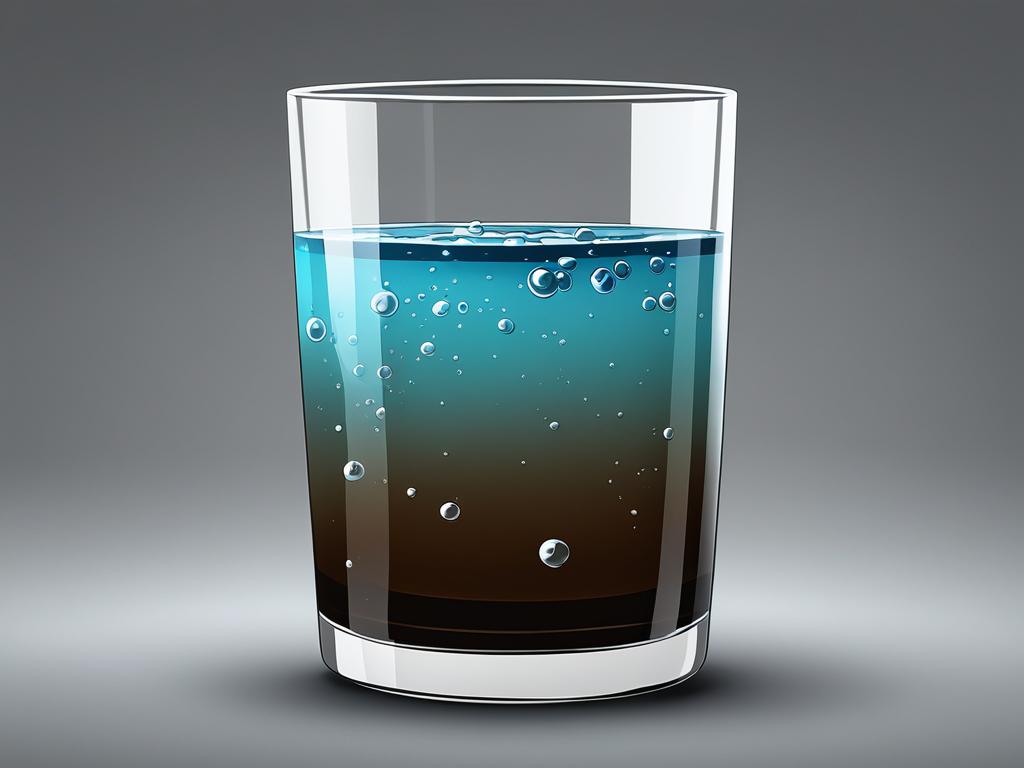
The Connection Between TDS Levels and Water Hardness
Not only does a high TDS level alter the aesthetics and taste of your water, but it also plays a pivotal role in determining the hardness of your water. This concept of water hardness is crucial, as it dictates how your water interacts with soaps and detergents and affects the lifespan and efficiency of your household appliances due to scale build-up. If you’ve noticed spots on your clean dishes or reduced soap lather, high TDS could be the culprit. To better understand how TDS levels can affect your daily life, here’s a comparative look at how different TDS concentrations influence water properties:
| TDS Level (ppm) | Taste Profile | Water Aesthetics | Impact on Appliances | Soap and Detergent Efficiency |
|---|---|---|---|---|
| 0-200 | Often considered fresh | Clear | Minimal impact | High efficiency |
| 200-500 | Desirable mineral flavor | Slight discoloration possible | Slight scaling possible | Some reduction in lather |
| 500-1000 | Can be metallic or sour | Noticeable murkiness | Scaling more common | Reduced lather efficiency |
| 1000+ | Generally unpleasant | Cloudy and colored | Significant damage | Greatly reduced lather |
Whether you’re cooking, cleaning, or simply quenching your thirst, the impact of high TDS levels can be more than just aesthetic. Your quest for the perfect balance in water quality starts with understanding these key elements and recognizing how they affect your everyday life. Taking steps to manage TDS can lead to water that not only tastes better but also performs better for your domestic needs.
Understanding the Significance of TDS as a Water Quality Indicator
When you turn on your tap, the clarity and taste of your water may seem like clear indicators of its quality. However, the true measure of water’s purity often lies unseen: in the total dissolved solids, or TDS, that the water contains. TDS plays a critical role as a water quality indicator, signaling not just the water’s general condition but also hinting at the presence of hidden substances that could impact your health. TDS significance in assessing water quality cannot be overstated.
The role of TDS in regards to water quality extends beyond mere numbers on a testing device. A high TDS level can be a red flag, prompting you to consider possible contaminants such as lead, arsenic, or iron. These harmful elements can sneak into water supplies through channels like industrial waste or agricultural runoff. While TDS is not inherently harmful, its levels can provide crucial information about what else might be lurking in your water.
- Investigation of water’s taste and hardness
- Monitoring for potential health risks in water supply
- Assessment of the aesthetics of domestic water
The importance of understanding TDS becomes clearer when you think about the daily consumption of water. By considering both its direct effects, such as changes in water hardness, and its indirect implications, which can include health risks from other pollutants, TDS becomes an essential factor in maintaining safe and palatable water in your home.
| Water Characteristic | Role of TDS | Potential Implications |
|---|---|---|
| Taste | Indicator of mineral content | Tastes ranging from metallic to earthy |
| Hardness | Contributes to scale buildup | Impacts on appliances and personal care |
| Presence of Contaminants | Suggestive of pollution | Imperative to conduct further testing |
| Aesthetic Quality | Impacts clarity and appearance of water | Influences user preference and consumption |
Altogether, as you consider the water you drink, cook, and clean with, remember the inherent TDS significance. It’s more than just a measure; it’s an invaluable tool for ensuring the water’s safety and a satisfactory domestic water experience.
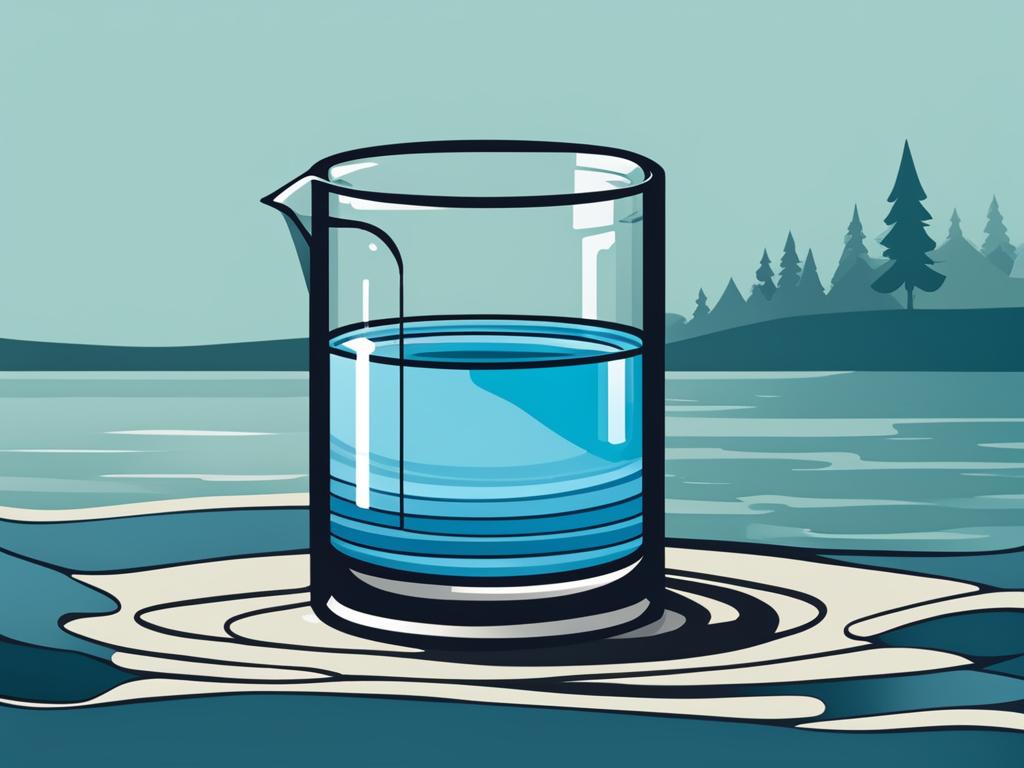
TDS vs. Contaminants: Interpreting TDS Readings Correctly
When you receive a TDS reading, it’s important to understand what it conveys about the water quality and how it could relate to health risks. Essentially, TDS readings give you a total count of all particles dissolved in the water but can’t differentiate between beneficial minerals and potential water contaminants. A fine balance is needed to evaluate TDS levels for water quality assessment.
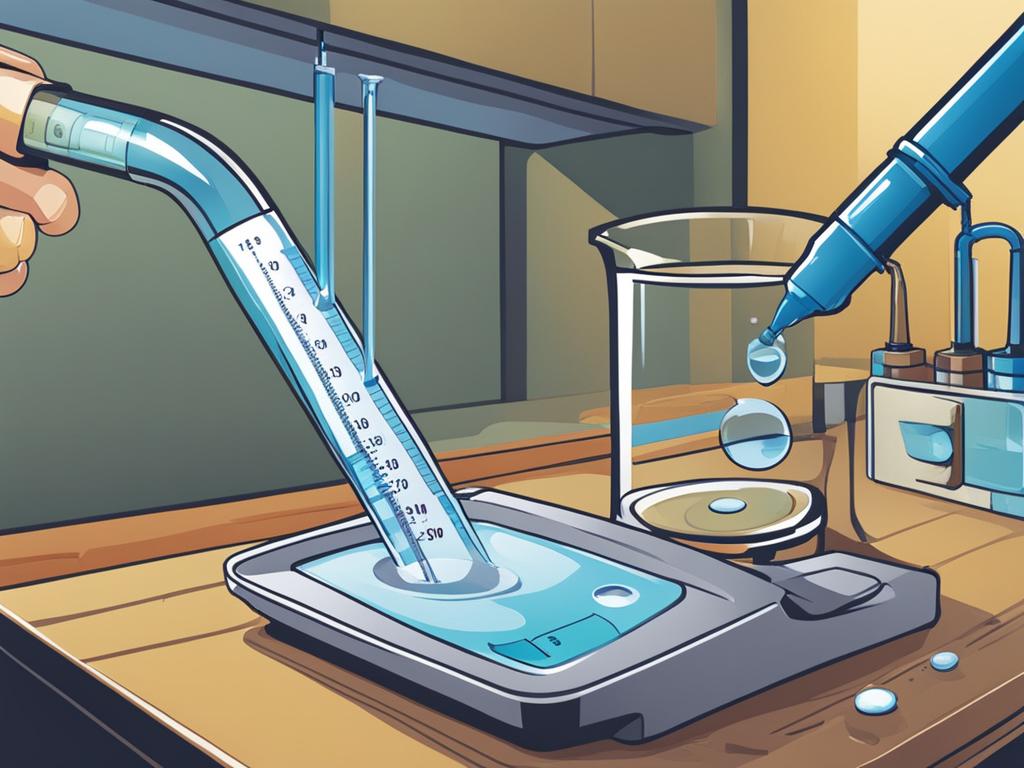
Difference Between TDS and Harmful Substances
It’s common to associate any variation in TDS readings with a change in water quality. However, not all dissolved solids are a cause for concern. Some minerals that contribute to TDS, like calcium and magnesium, are actually necessary for your health. On the flip side, toxic heavy metals such as lead and mercury could also be part of the TDS. Nonetheless, identifying what specifically constitutes the TDS in your water is key to understanding the real picture.
Using TDS as a Gauge for Potential Health Risks
The real utility of TDS readings is their role as an early warning system. Elevated TDS levels could indicate a higher probability of contaminants being present, signaling the need for a more thorough water quality assessment.
“Although a TDS meter provides the first clue, further testing is advisable to determine if there are substances in your water that could pose health risks”
, says a seasoned water quality technician.
| Dissolved Mineral | Potential Health Benefit | Potential Contaminant | Associated Health Risk |
|---|---|---|---|
| Calcium | Bone health | Lead | Nervous system damage |
| Magnesium | Regulates metabolic processes | Mercury | Kidney and neurological disorders |
| Potassium | Muscle function | Copper | Gastrointestinal distress |
| Sodium | Nerve impulses and muscle contractions | Arsenic | Skin lesions, cancer |
Understanding the implications of TDS readings is crucial in ensuring that the water you consume is not just refreshing but also safe. When it comes to protecting your well-being, staying informed and proactive about water contaminants is indispensable.
Canadian and U.S. Guidelines for TDS in Drinking Water
When talking about drinking water guidelines, there’s an important conversation to be had regarding the standards and regulations set by both Canadian and American authorities. While the acceptable levels of Total Dissolved Solids (TDS) in your drinking water might not be legally binding, they are critical benchmarks for assessing the quality of water you consume daily. Let’s delve into the details of the TDS standards in Canada and the TDS regulations in the United States.
TDS Standards in Canada
In the realm of Canadian water safety, the term MAC, or Maximum Acceptable Concentration, comes into play. Guidelines suggest that drinking water should have a TDS level of less than 500 parts per million (ppm). However, it’s worth noting that these guidelines are not enforced uniformly across the country, as provinces have the jurisdiction to establish their own TDS standards. The focus here is primarily on the aesthetic quality of water, including factors such as taste and mineral content.
TDS Regulations in the United States
Across the border in the United States, the Environmental Protection Agency (EPA) provides guidance on the Secondary Maximum Contaminant Level (SMCL) for TDS, which also stands at 500 ppm. Just like in Canada, U.S. TDS regulations are not mandatorily enforceable but serve as a point of reference for water systems to help ensure an aesthetically pleasing drinking water supply.

| Parameter | Canada | United States |
|---|---|---|
| TDS Guideline | ||
| Enforcement | Province Dependent | Not enforceable |
| Main Focus | Water Aesthetics | Water Aesthetics |
Understanding these guidelines is paramount as you navigate the complexities around the water you and your family drink. It’s essential to realize that while these TDS standards are not legally enforced, they are still key indicators of the overall quality of water, reflecting on both its safety and palatability.
pH Levels and Their Influence on Water Quality Indicators
As a key indicator of water quality influence, pH levels serve to inform you about the water acidity or alkalinity present in your drinking water. With 7.0 being the neutral mark on the pH scale, numbers below this point suggest a more acidic nature, while those above signal a more alkaline state. The balance of pH is not only a matter of taste and aesthetic preference but also one of health and environmental factors.
Fluctuating pH levels can arise from a variety of sources, including both natural phenomena and human-caused events such as industrial pollution. These shifts in pH can bring about significant effects on aquatic ecosystems, influence human health and impact the efficacy of water treatment processes.
| pH Level | Implication | Effect on Water Quality |
|---|---|---|
| Below 6.5 | Acidic | Negative effects on metal pipes and structures; potential leaching of heavy metals into the water supply. |
| 6.5 – 7.5 | Neutral | Optimal for drinking; best balance for water aesthetics and minimal health risks. |
| Above 7.5 | Alkaline | Possible bitter taste; can hinder the effectiveness of certain water disinfection methods. |
| Above 8.5 | Highly Alkaline | Could cause scaling in plumbing, and potentially adverse health effects. |
It’s important to acknowledge that the standards for water quality concerning pH vary, with Canada’s guidelines suggesting that drinking water should have a pH between 6.5 and 9.0. In the United States, the range is slightly tighter, with the recommended pH level ranging from 6.5 to 8.5 according to federal regulations. These guidelines can help you determine whether the water you’re drinking falls within an acceptable pH range, potentially prompting you to take action if the water is outside of these parameters.
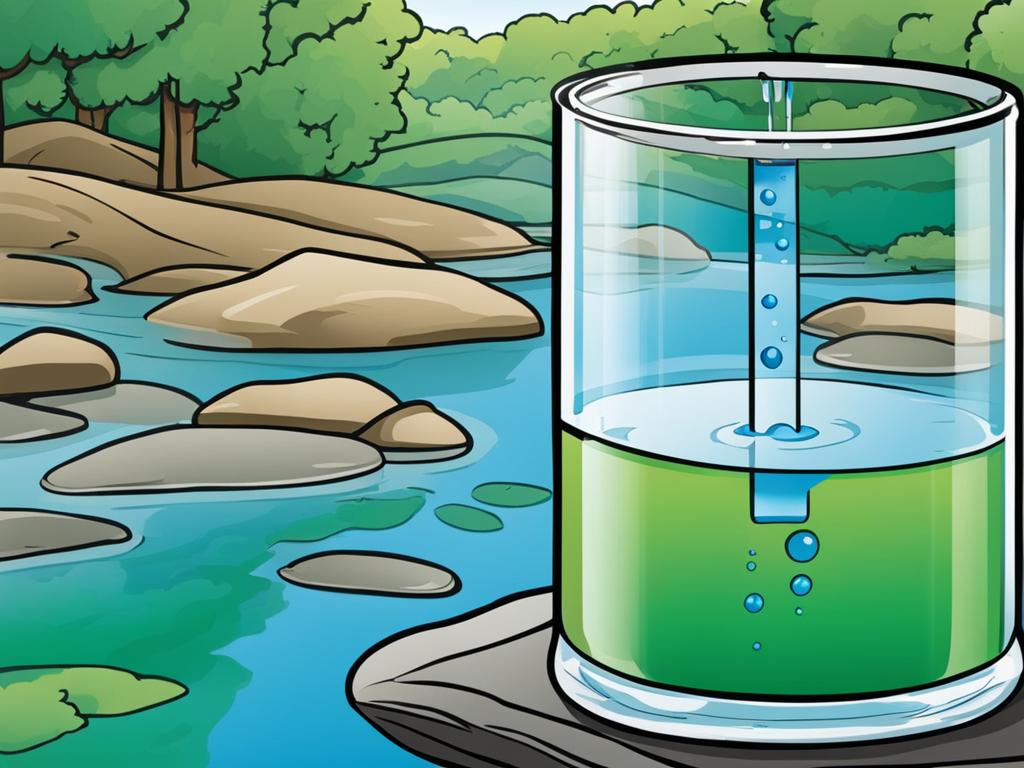
Understanding and managing the pH of your water supply is indispensable in maintaining overall water quality. Slight deviations in pH can have far-reaching consequences, and it’s incumbent on you, as a consumer, to remain vigilant about the acidity or alkalinity levels of the water you consume. Taking these proactive steps can ensure that your water supply is not only pleasant to the taste but safe for your health and the environment.
How to Treat and Reduce TDS in Your Water
Contemplating how to reduce TDS in your drinking water can leave you with a myriad of choices. Not all methods are created equal, especially when considering efficacy and the impact on water quality. However, by utilizing a combination of water treatment techniques, you can achieve not only lower TDS levels but also healthier and better-tasting water.
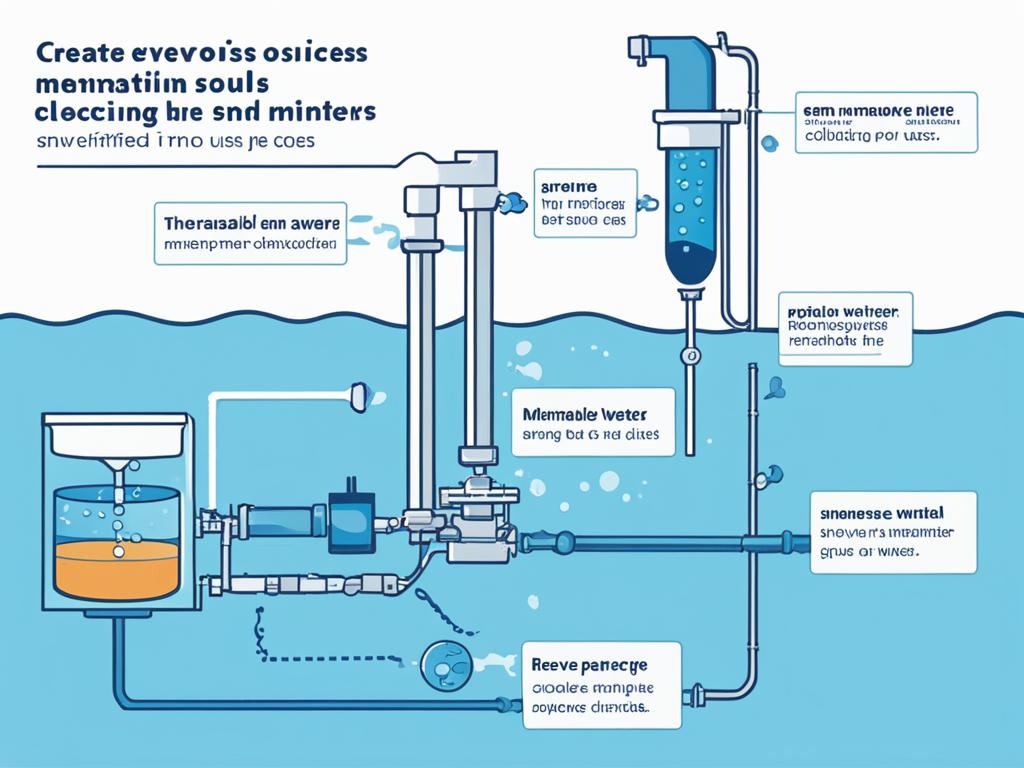
Techniques for TDS Removal: Reverse Osmosis and Other Methods
To treat water TDS, reverse osmosis (RO) is one of the most reliable methods out there. This process pushes water through a semi-permeable membrane, filtering out a significant amount of TDS as well as various contaminants. But RO isn’t the only player in the game – other water treatment systems such as distillation and certain types of filtration can also aid in reducing TDS levels.
| Method | TDS Reduction | Minerals Removed | Maintenance Required |
|---|---|---|---|
| Reverse Osmosis | 90-99% | Most minerals including beneficial ones | Regular filter changes |
| Distillation | 95-99% | Most minerals including essential ones | Frequent cleaning to prevent scale |
| Carbon Filtration | Variable | Chlorine and organic compounds | Regular replacement of carbon filters |
The Importance of Remineralization After TDS Removal
While it’s important to reduce TDS for a variety of reasons, the process of removal, especially through reverse osmosis, can strip away not only harmful substances but also essential minerals that benefit your health. Fortunately, remineralization serves as a pivotal step in revitalizing your water with these necessary nutrients, thus improving water quality and taste. It’s a simple but vital addition to the water treatment process that ensures you receive all the benefits of clean, mineral-rich water at home.
- Select a remineralization filter that adds back calcium, magnesium, and other vital minerals.
- Regularly test your water to ensure the remineralization process is effective.
- Stay informed about the mineral content that is ideal for your health and well-being.
Conclusion
The intricate dance between water quality and your health hinges on a deep understanding of Total Dissolved Solids (TDS). With the insights gathered in this article, you’re now equipped to engage in informed water quality management, ensuring that each sip of your drinking water contributes to your wellbeing. Recognizing the sources and impact of TDS not only on aesthetic qualities like taste but also in terms of safe drinking water is a responsibility that comes with lasting rewards.
Understanding TDS for Better Water Quality Management
Knowledge about TDS and its significance in water quality management can have a profound effect on your daily life. By identifying both the natural and artificial sources of TDS and observing how they interact with other water quality indicators, you are capable of taking proactive steps to ensure the excellence of your water supply. Armed with information on regulations and TDS measurement techniques, you can keep a vigilant eye on the water that flows through your faucets.
Making Informed Decisions About Your Drinking Water
Deciphering the nuances of TDS levels is vital for making informed decisions that guarantee safe drinking water in your home. Whether it’s choosing the correct filtration methods or understanding the right time for filter replacement, your actions are now underpinned by a solid comprehension of water quality. Deciding to undertake regular testing and opt for treatments like reverse osmosis, along with subsequent remineralization, you contribute to the long-term purity and taste of your drinking water. Thus, the power to enhance your water’s safety and enjoyment rests in your hands.
FAQ
What exactly is TDS in the context of water quality?
TDS, or Total Dissolved Solids, refers to the combined total of organic and inorganic substances contained in a liquid such as water. These are present in various forms, including molecular, ionized, or in micro-granular suspended form.
How does TDS affect the purity of water?
TDS is used as an indicator of water purity. High TDS levels mean there’s a greater concentration of dissolved substances, which might suggest the presence of contaminants, while low TDS levels usually indicate purer water with fewer dissolved substances.
Where do the substances measured by TDS originate from?
Substances contributing to TDS in water can come from natural sources, such as minerals from the earth, or from human activities, such as pollution from industrial discharges or chemicals from de-icing salts.
What are the implications of high TDS levels on water quality and taste?
High TDS can impact the water’s taste, making it bitter or metallic, and influence its aesthetic quality, potentially causing staining or cloudiness. It can also result in hard water, which can hinder soap lathering and lead to scale buildup in plumbing systems.
Can you provide further explanation on how TDS serves as a water quality indicator?
TDS itself isn’t typically harmful but indicates the presence of dissolved minerals in water. However, a high TDS level can signal potential health risks as it may coincide with harmful substances like heavy metals or chemicals in the water.
What’s the difference between TDS and harmful contaminants in water?
While TDS measures all dissolved substances in water, it doesn’t distinguish between beneficial minerals and harmful contaminants. That’s why further testing is necessary when high TDS levels are present, to identify any toxic elements.
What are the Canadian guidelines for TDS levels in drinking water?
The Canadian guidelines recommend that TDS levels in drinking water should be below 500 parts per million (ppm), although these are not strictly enforced and provinces may set their own limits.
How do the United States regulations address TDS in drinking water?
In the United States, the EPA suggests a Secondary Maximum Contaminant Level for TDS set at 500 ppm. This guideline is not enforceable and is more about water taste and appearance than health risks.
Can TDS levels affect the pH of water?
Yes, TDS can impact the pH level of water indirectly, as dissolved minerals and substances contribute to the overall acidity or alkalinity of water. However, pH level fluctuations are also affected by various other factors.
What methods are there to treat and reduce high TDS in water?
There are several methods, including reverse osmosis, which is highly effective in removing TDS. It’s important to follow up with remineralization, adding essential minerals back to the water for health benefits and better taste.
How important is it to remineralize water after TDS removal?
Remineralization is essential after TDS removal such as reverse osmosis, because while you want to get rid of contaminants, you also want to retain or restore beneficial minerals for health and taste improvement.
Why is understanding TDS vital for water quality management?
Knowledge of TDS levels helps you manage water quality effectively, identifying potential contaminants and understanding the potential impact on taste and hardness, which informs decisions about water treatment and consumption.

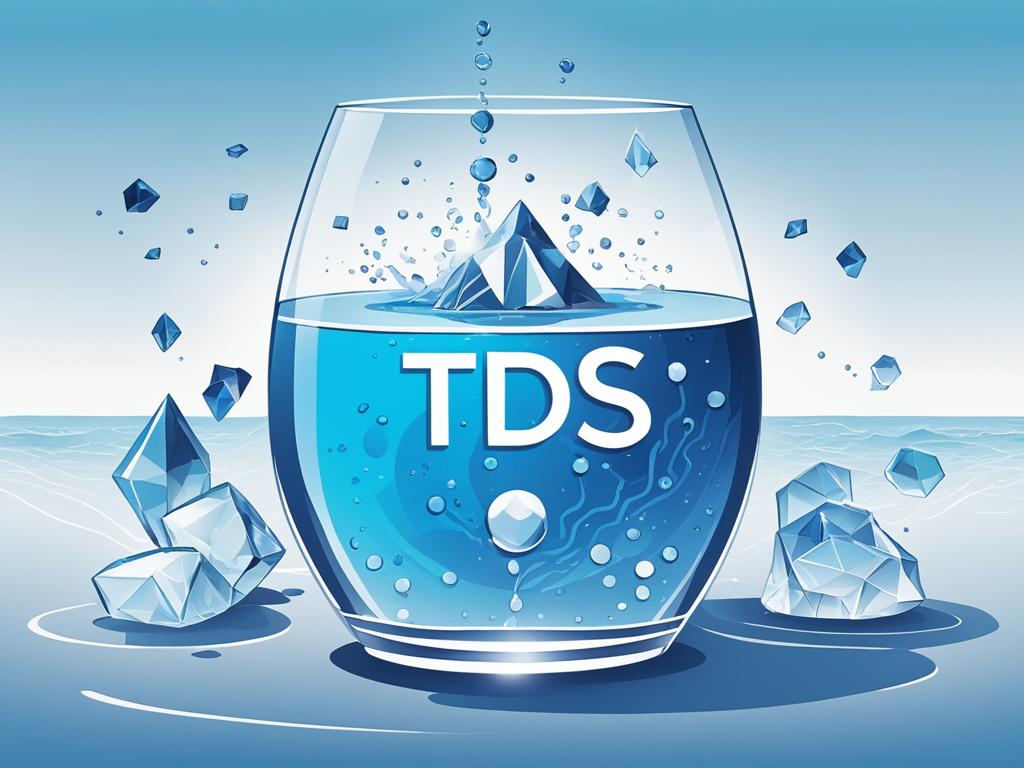
Leave a Reply
You must be logged in to post a comment.